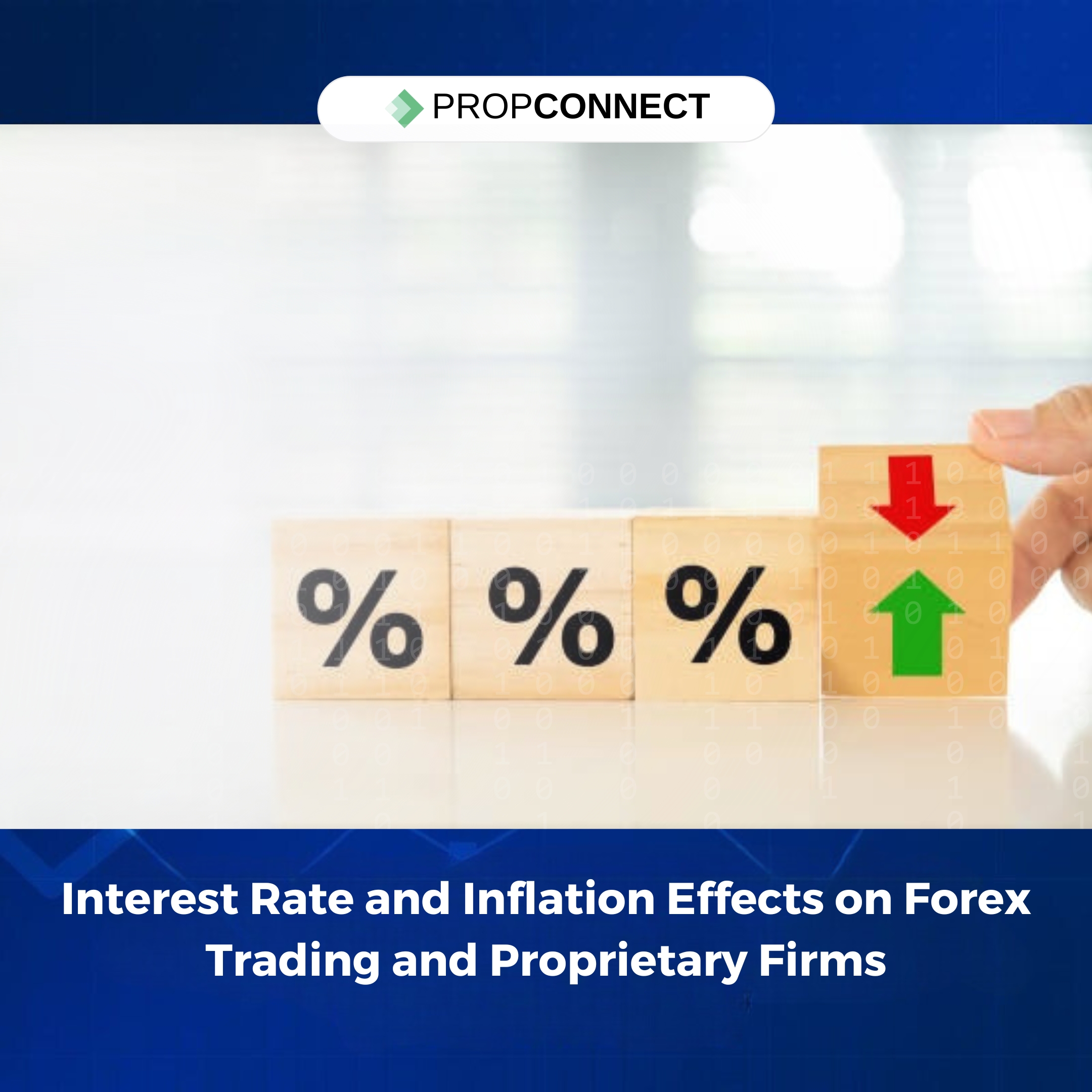Articles
Interest Rate and Inflation Effects on Forex Trading and Proprietary Firms
Traders and prop businesses need to be aware of how interest rates and inflation interact in order to modify their trading and risk-taking tactics. Traders can succeed in prop trading and FX trading by navigating the intricacies of inflation dynamics and interest rate dynamics with knowledge, discipline, and agility.

Few things have as much of an impact on the complex network of international financial markets as inflation and interest rates. Both proprietary trading firms (prop firms) and forex traders keep a careful eye on these economic indicators since they have a big impact on trading methods, market mood, and currency values. The article will examine how inflation and interest rates impact prop businesses and FX trading, as well as how traders can take advantage of these dynamics to maximise their trading profits.
Central banks' interest rate policies have a significant impact on how much currency they are worth and how much they swap for. Interest rates have a direct bearing on how appealing a nation's currency is to investors, since higher interest rates usually translate into larger returns on assets held in that nation's currency. As a result, when investors chase higher returns, currencies from nations with higher interest rates frequently rise in value relative to currencies from nations with lower interest rates.
A nation's currency usually appreciates when its central bank raises interest rates in an attempt to reduce inflation or calm an overheating economy because investors seek out the greater rewards. On the other hand, if central banks cut interest rates to battle deflation or boost economic growth, investors may look elsewhere for better yields, which could result in a weakening of the currency.
The rate of general price increases for goods and services, or inflation, is another important factor affecting FX markets. Excessive inflation reduces a nation's purchasing power and depreciates its currency, causing devaluation. On the other hand, low inflation or deflation can increase the value of a currency by maintaining its purchasing power and making it more appealing to investors.
The Consumer Price Index (CPI) and Producer Price Index (PPI) are two inflation indicators that forex traders regularly watch in order to assess the state of an economy and predict future changes in monetary policy. A rise in interest rates by central banks in response to rising inflation may tighten monetary policy and cause currency appreciation. On the other hand, falling inflation or deflation may force central banks to loosen monetary policy by cutting interest rates, which may result in a weakening of the value of the currency.
Forex traders can profit from interest rate differentials and inflation expectations as a result of the dynamic interactions between interest rates and inflation. To take advantage of interest rate differentials, carry trading, a well-liked forex trading method, entails borrowing in low-interest currencies and investing in high-interest currencies. Carry trades are risky, though, as losses may result from abrupt changes in interest rates or market sentiment.
Forex traders modify their positions in reaction to expected shifts in inflation rates and central bank policy measures, which also have an impact on inflation expectations and the currency markets. In an attempt to profit from differences between real inflation statistics and market expectations, traders may take long or short positions in currencies depending on their projections of future inflation patterns.
Interest rates and inflation have a significant impact on prop firms' trading tactics, approaches to managing risk, and overall performance of their portfolios. Prop traders use data on inflation, central bank policies, and interest rate differentials to find trading opportunities and efficiently manage risk. Prop companies can capitalise on developing trends and minimise potential losses by adjusting their trading methods in anticipation of changes in inflation dynamics and interest rate movements.
Additionally, prop firms use cutting-edge technology and data analytics tools to track economic indicators, assess moods in the market, and quickly and effectively execute bets. Prop businesses may achieve a competitive advantage in the rapidly evolving forex trading market by leveraging technology to optimise trading performance and maximise profits.
But managing the effects of inflation and interest rates on prop businesses and FX trading requires rigorous research, controlled risk, and flexibility in response to shifting market conditions. It is crucial for traders to stay informed about economic developments, central bank statements, and changes in geopolitics that might have an impact on interest rates and inflation trends. Furthermore, in order to safeguard capital and reduce losses in volatile market conditions, traders should put strong risk management procedures into place, such as establishing stop-loss orders and position limits.
In summary, interest rates and inflation are the main forces behind the foreign exchange market, impacting trading tactics, market sentiment, and currency valuations. Traders and prop businesses need to be aware of how interest rates and inflation interact in order to modify their trading and risk-taking tactics. Traders can succeed in prop trading and FX trading by navigating the intricacies of inflation dynamics and interest rate dynamics with knowledge, discipline, and agility.

